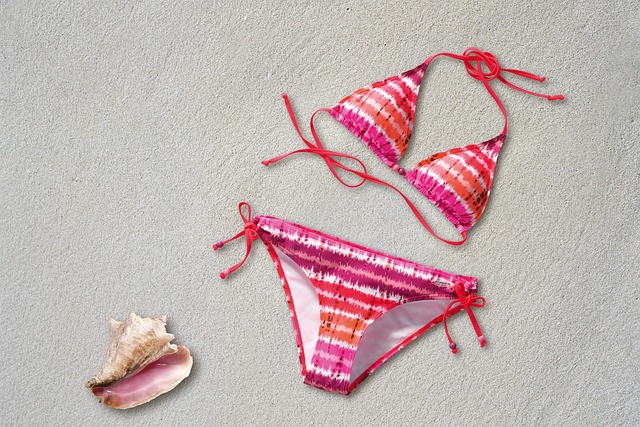Swimwear Trends: From Bikinis to Beach Fashion
Swimwear has evolved from a simple necessity to a vibrant expression of personal style and fashion. As the cornerstone of beach and poolside attire, swimsuits have undergone significant transformations over the years, reflecting changing societal norms, technological advancements, and fashion trends. Today, the world of swimwear offers an extensive array of options, catering to diverse body types, personal preferences, and functional needs.

Asymmetrical cuts and one-shoulder tops are also gaining traction, adding a touch of sophistication to beachwear. For those seeking more coverage without compromising style, tankinis and crop-top bikinis provide versatile options that bridge the gap between traditional two-pieces and full coverage swimsuits.
How has swimwear fashion evolved for women?
Women’s swimwear has come a long way from the modest bathing costumes of the early 20th century. The introduction of the bikini in 1946 marked a revolutionary change in beach fashion, though it took years to gain widespread acceptance. Today, women’s swimwear encompasses a vast range of styles, from itsy-bitsy string bikinis to elegant one-piece suits and everything in between.
Recent years have seen a surge in inclusive sizing and designs that cater to diverse body types. Many brands now offer swimwear in extended size ranges, acknowledging that beach fashion is for everyone. Additionally, there’s been a rise in swimwear that doubles as ready-to-wear, such as swimsuits that can be paired with skirts or shorts for a seamless transition from beach to street.
What are the key features to look for in quality swimwear?
When shopping for swimwear, several factors contribute to its quality and longevity. Fabric is paramount; look for materials that offer UV protection, chlorine resistance, and quick-drying properties. Nylon and spandex blends are popular for their durability and stretch, while newer innovations like recycled polyester provide eco-friendly alternatives without compromising on performance.
Construction details matter significantly in swimwear. Double-stitched seams, lined cups for support, and adjustable straps or ties contribute to a suit’s comfort and fit. For those spending extended time in the water, consider swimsuits with UPF (Ultraviolet Protection Factor) ratings to shield your skin from harmful sun rays.
How can you choose the right swimwear for your body type?
Selecting the perfect swimwear involves more than just following trends; it’s about finding pieces that complement your body shape and make you feel confident. For those with an hourglass figure, bikinis with underwire tops and high-waisted bottoms can accentuate curves beautifully. Pear-shaped bodies might opt for tankinis or one-pieces with ruching to balance proportions.
Athletic builds can add curves with ruffled tops or cut-out one-pieces, while those with a fuller bust might prefer swimsuits with built-in support or underwire. Remember, the key is to choose styles that make you feel comfortable and confident, regardless of current trends or conventional “rules” about body types.
What are some popular beach fashion accessories to complement swimwear?
Beach fashion extends beyond swimwear, encompassing a range of accessories that enhance your overall look and provide practical benefits. Wide-brimmed sun hats not only add a touch of glamour but also offer crucial sun protection for your face and neck. Oversized sunglasses serve a similar dual purpose, shielding your eyes while making a fashion statement.
Cover-ups have become increasingly versatile, ranging from sheer kaftans and sarongs to more structured shirt dresses that can transition from beach to casual dining. Beach bags have also evolved, with waterproof materials and dedicated compartments for wet swimwear becoming common features.
How has sustainable and ethical swimwear impacted the industry?
The swimwear industry has seen a significant shift towards sustainability in recent years. Many brands now offer swimsuits made from recycled plastics, including discarded fishing nets and plastic bottles recovered from the ocean. This eco-friendly approach not only reduces waste but also raises awareness about marine pollution.
Ethical production practices have also gained importance, with consumers showing increased interest in fair labor conditions and transparency in the supply chain. Some brands have responded by partnering with artisans in coastal communities or implementing zero-waste manufacturing processes.
This focus on sustainability extends to packaging and marketing materials, with many companies opting for biodegradable or recyclable options. As consumers become more environmentally conscious, the demand for sustainable swimwear is likely to continue growing, pushing the industry towards more innovative and eco-friendly solutions.
Swimwear and beach fashion have come a long way, evolving from simple functional garments to diverse, stylish, and sustainable options that cater to a wide range of preferences and body types. Whether you’re lounging by the pool, surfing the waves, or strolling along the beach, today’s swimwear offers something for everyone, blending fashion, function, and environmental consciousness.






